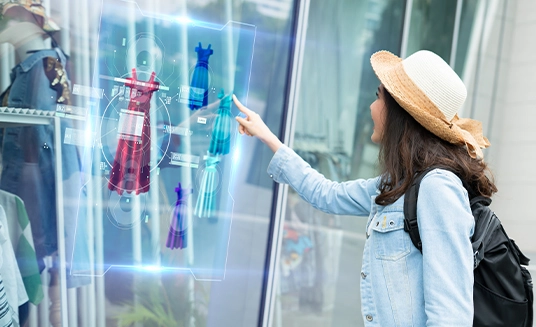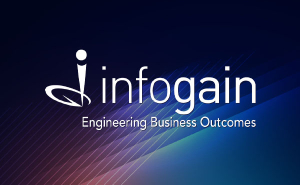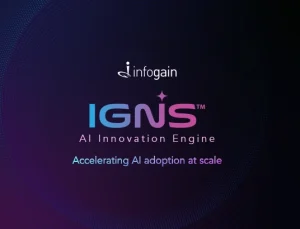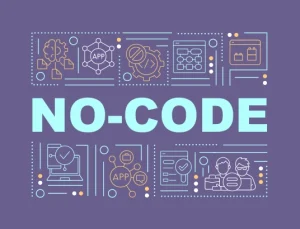CPG Challenges Solved by AI
Because of its ability to quickly process and analyze data, AI has enabled CPG companies to overcome some complex hurdles:
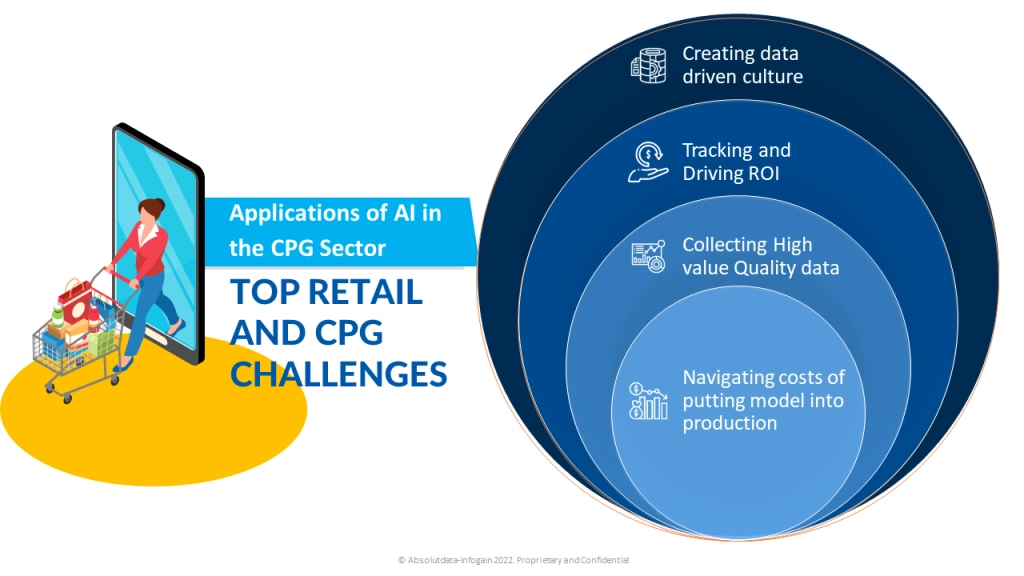
Where Can CPG Apply AI?
Business Intelligence – powered by AI—can improve performance across the entire organization:
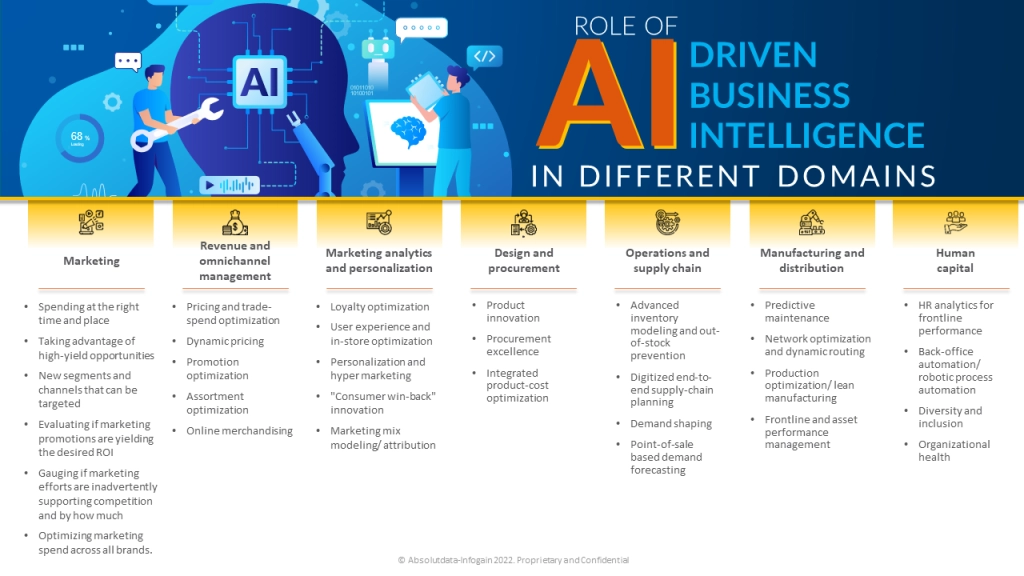
What’s Stopping CPG Adoption of AI?
With all of the potential upsides of deploying AI in a CPG company, drumming up support and enthusiasm should be no problem – right? Not always. While some CPG companies have embraced AI, others have held back because of one or more of the following reasons.
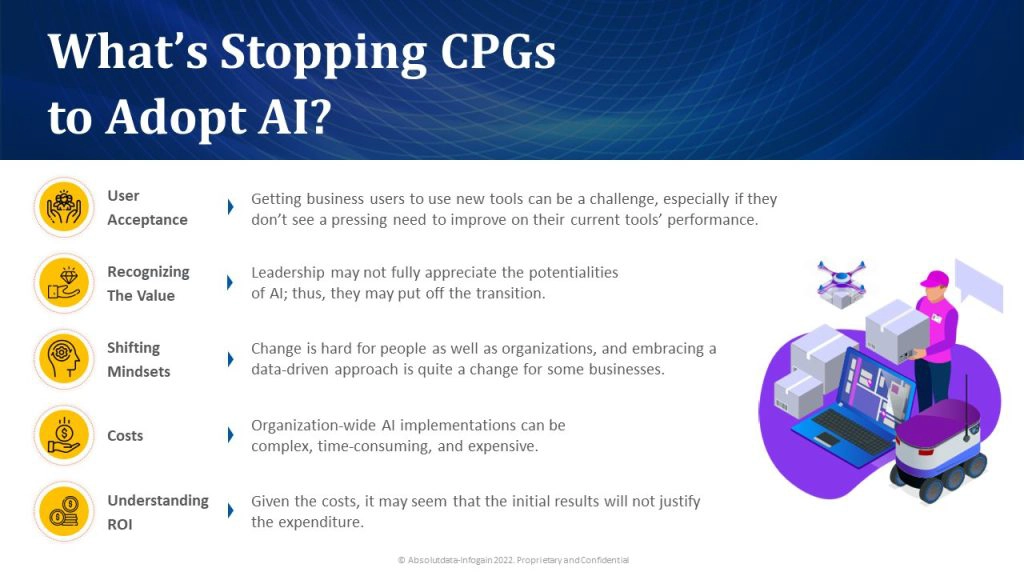
As the above infographic implies, emphasizing the value AI brings can help spur buy-in. And setting clear expectations about its performance (and explaining how it improves over time) can clarify how to accurately measure ROI.
From Problem to Performance Boost with AI
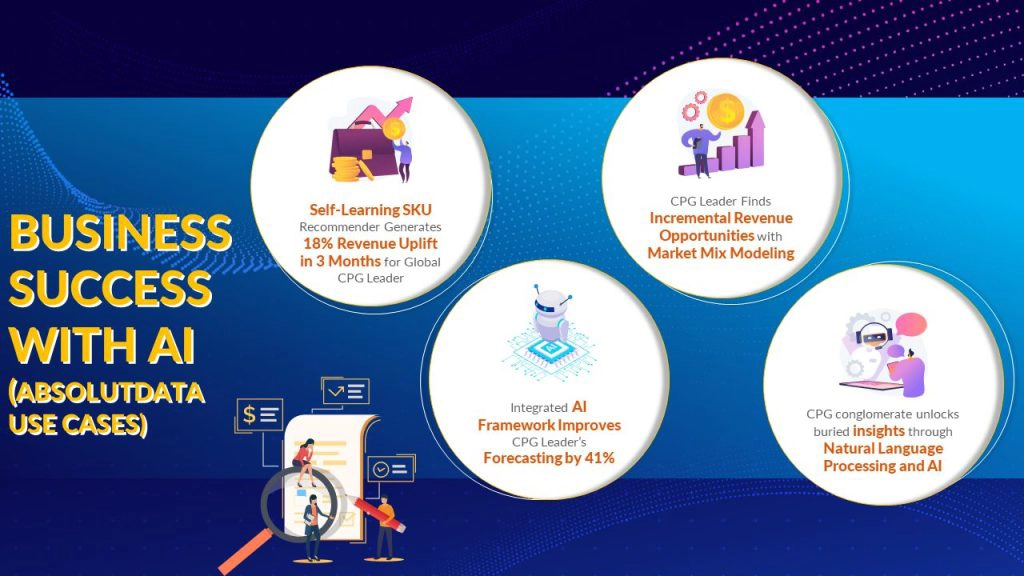
Many CPG companies have already used AI to turn previous problem areas into performance boosts. These have included:
- A US-based global CPG leader that used an integrated AI framework to power super-accurate forecasting, enabling teams to discover focus areas, fix leaky buckets, and optimally reallocate spends.
- An multinational snack foods conglomerate that used AI-powered market mix modeling to identify potential growth drivers and optimize budget decisions, leading to more incremental revenue opportunities.
- A global CPG conglomerate that generated 18% revenue uplift in 3 months using an AI-based self-learning SKU recommender to provide store-level SKU recommendations for 1.3 million stores across 40 distributors and 800 branches.
- A Middle Eastern CPG leader that employed natural language processing to instantly deliver insights to business users. This increased organizational agility, cut costs, dramatically shortened report turnaround times, and boosted productivity.
Clearly, AI can be profitably deployed across the CPG sector. Now is the time to take advantage of its many abilities.

